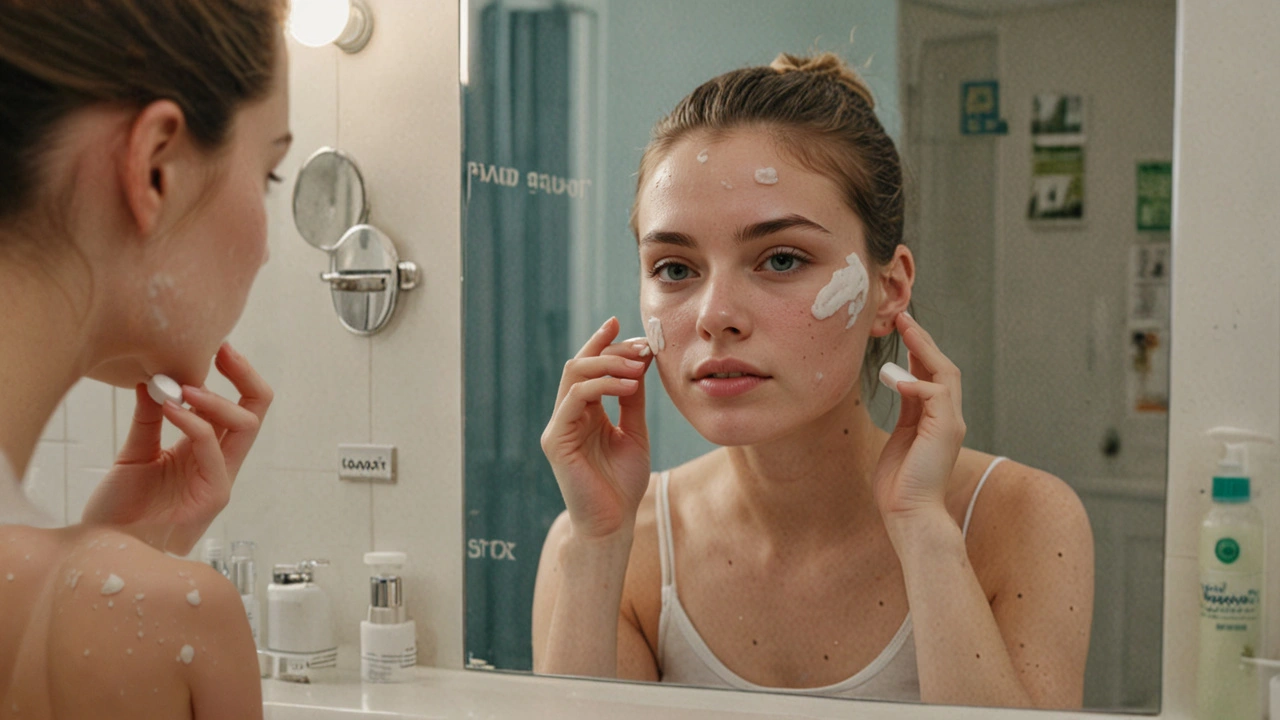If you’ve tried every acne product but still see stubborn bumps, you might be dealing with fungal acne. It’s not real acne; it’s a yeast overgrowth that lives in hair follicles. The good news is you can clear it fast once you know what to look for.
Typical acne has red, inflamed pimples and sometimes blackheads. Fungal acne shows up as tiny, uniform bumps that are often itchy. They usually appear on the chest, back, shoulders or forehead – places that stay warm and sweaty.
The bumps don’t have a whitehead at the top, and they tend to spread quickly in clusters. If you’ve used oily creams or heavy moisturizers and the spots got worse, that’s another clue. A quick test is to stop using any new product for a few days; if the rash calms down, it was probably irritated by something greasy.
The yeast behind fungal acne loves moisture and heat. Tight workout clothes, sweaty gym sessions, humid weather or long showers create perfect conditions. Overuse of antibiotics can also tip the balance, letting the yeast grow unchecked.
Even some skin‑care ingredients, like certain oils or heavy silicones, feed the fungus. If you’re prone to fungal acne, stick to lightweight, non‑comedogenic products and keep your skin as dry as possible after sweating.
The first move is to switch to an antifungal shampoo or body wash that contains ketoconazole, selenium sulfide or zinc pyrithione. Use it on the affected areas once a day for two weeks, then taper off.
If the rash persists, over‑the‑counter creams with clotrimazole or miconazole work well. Apply a thin layer twice daily and avoid covering the spot with heavy bandages.
For stubborn cases, a short course of oral antifungal pills prescribed by a doctor can clear things up faster. Always follow the dosage instructions and finish the full course, even if you feel better early on.
Keep skin dry: after workouts, shower promptly and use a clean towel. Choose breathable fabrics – cotton or moisture‑wicking blends are best for gym wear.
Limit heavy creams: opt for water‑based moisturizers labeled “non‑comedogenic.” When you need a sunscreen, pick a gel or spray formula rather than a thick lotion.
Avoid reusing towels or pillowcases without washing them. A quick wash in hot water kills the yeast that may linger on fabrics.
If you’ve tried antifungal washes for two weeks and see no improvement, it’s time to get professional help. A dermatologist can confirm the diagnosis with a simple skin scrape and prescribe stronger medication if needed.
Also seek medical advice if the rash spreads rapidly, becomes painful, or shows signs of infection like pus or fever. Early treatment prevents scarring and keeps your skin looking its best.
Fungal acne can be frustrating, but with the right clues and a few easy steps you’ll have clear skin again. Remember: keep it dry, choose light products, and treat early – that’s the fastest route back to smooth, healthy skin.
